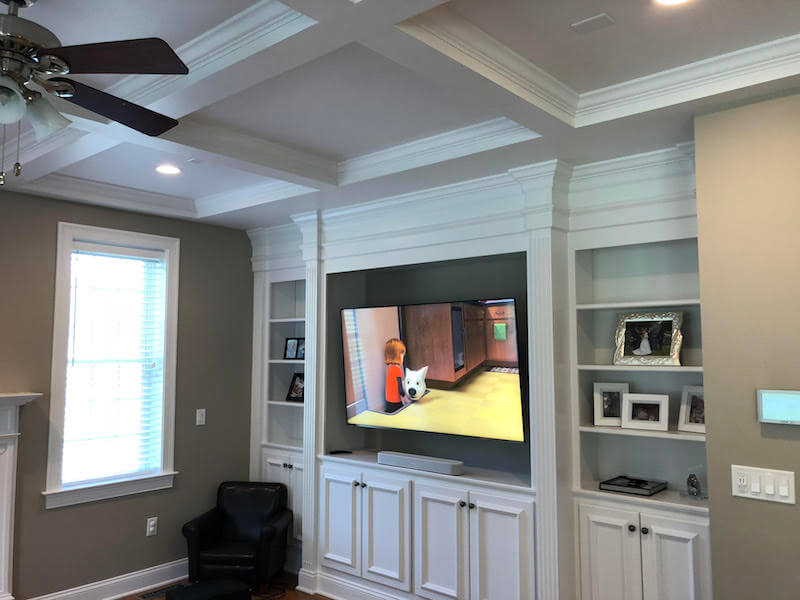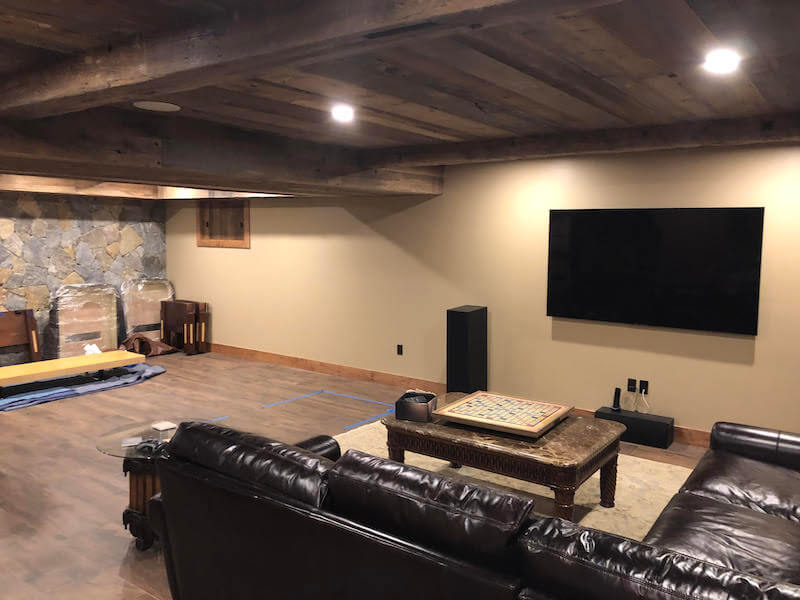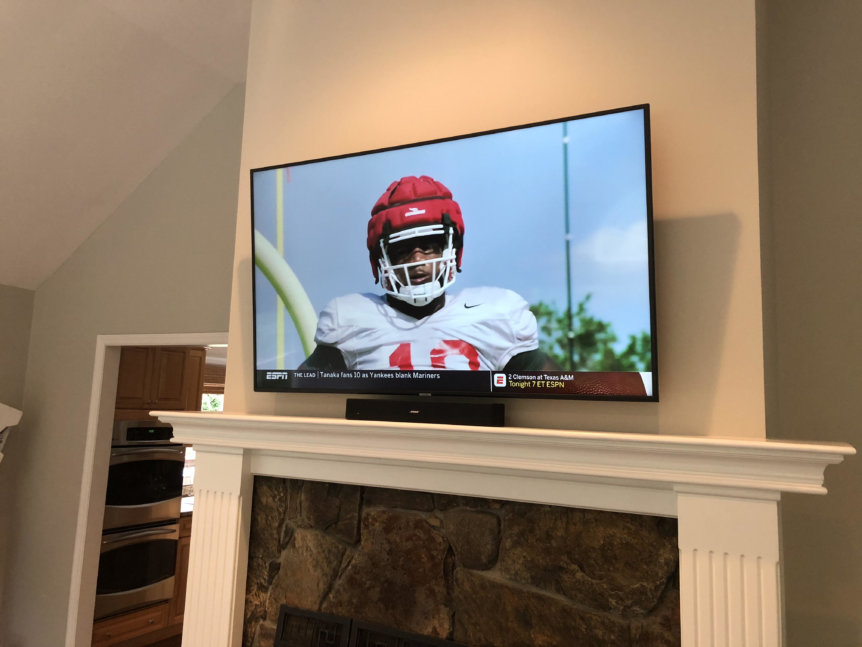When you’re considering mounting your TV on the wall, it seems like a relatively straight forward process. Find the studs, mount the tv bracket, and hang your tv on it. Now kick back and crack open a cold one, because you just earned yourself a free afternoon.
Don’t put your tools away yet. You should probably take the tv down, because there’s still work to do, and this is where things start to get a bit more complicated. Here are the 5 things to consider before mounting your tv.
TV Mounting Height
Determining height is pretty straight forward. The average tv between 50-65″ is between 24-28″ tall. You have to decide what height your tv will look the best based on your room and furnishings. That’s the easy part.

How Many Devices?
Now that we’ve decided where and at what height the tv will get mounted, we need to figure out what we’re going to do with all of the peripheral devices. Things like cables boxes, gaming systems, and blu-ray players, can clutter up an otherwise clean installation. Are you planning on having a cabinet directly under the tv? Do you want a fresh, modern look without devices showing? This is where things start to get a little murky for the typical homeowner, and also why I recommend you hire a pro.
When I say “pro”, I don’t mean the tv installer found on Craigslist. I’m referring to a custom integrator. Someone who knows how to route wires through the walls of your home, without turning your living room into swiss cheese.

Concealing The Wires
Now that you’ve decided where you’d like to place your devices, is it feasible getting the wires to that location? Do you have an unfinished basement or attic? If so, this will help your professional TV installer route the necessary cables through your home. If you happen to have a basement or attic, you may be able to place your devices in a nearby closet, maybe on a rack or a shelf in the basement, or in a small piece of furniture in the same room as the television. Your installer will be able to help you make the right decision based on your budget and needs.
A good installer will be able to “fish” the wires inside the wall. Once completed all of the cables should be in the wall and out of sight. This is the difference between a professional TV installer and the budget guy, exposed wires. Don’t forget the power cord for the tv. You’re going to need an electrical outlet behind the television, and if you decided to place your devices in a closet, you might need an additional outlet installed there too.

TV Mounting Bracket
Televisions are getting lighter and tv mounting brackets are getting cheaper, and when I say cheaper I mean they’re getting so cheap that they’re “out of square”. I’ve seen some horrendous TV brackets in my day. Do you have any idea how difficult it is for an installer to level a TV on a bracket that’s not square? It’s nearly impossible.
My recommendation is to buy a quality television and a quality tv mounting bracket. Brands like Chief, Sanus, and Strong come to mind. There are a few other good brands out there. The $20 brackets on Amazon are not them. For a television from 50″+ I’d recommend spending at a minimum $150 on the bracket.
There’s quite a bit of engineering that goes into a quality television bracket. Quality brackets sit closer to the wall than cheap brackets, and they have locking mechanisms to prevent them from being knocked off or stolen, they even have micro-adjustments to get it perfectly level. So, let’s talk about the tv mounting brackets themselves.
Fixed bracket– A fixed bracket that mounts to the wall, typically used for slim or “razor” applications where you want the back of the TV as close to the wall as possible. Some fixed brackets will hold the TV at a distance of 2 nickels or 10 business cards away from the wall. They’re a great solution when the side of the television may be viewable from a nearby walkway.
Tilt Bracket– A tilt bracket tilts from the top. Most will tilt up to a 15-degree angle. These are a great solution when mounting a tv above a fireplace, or hiding a small cable box or media player behind the television. Based on the design and manufacturer, these brackets can also have a nice tight fit to the wall. There’s very little cost difference between a fixed bracket and a tilt bracket. Most customers choose a tilt bracket because of the minor cost difference.
Articulating– Full Motion Mounts- Personally, I’m not a fan of articulating mounts in most circumstances. They’re bulkier, considerably more expensive than their counterparts, and in my experience don’t get moved around as much as a homeowner thinks they will. But when a TV is mounted in a corner, an articulating mount is your best friend, and your only option other than a ceiling mount.
Universal Remote Controls
If you have multiple devices in your system, you might opt for a universal remote control. A universal remote control will make it easy to control all of the devices in your system, including the inputs on your television, all with the press of a single button. For those of us that may be less than “tech savvy”, a universal remote control is the difference between an entertaining experience that the entire family can use, and one that can be frustrating when you have a lot of devices.
Before You Get Started
These are the things you should take into consideration before mounting your tv. Like most things in life, if you want a clean, professional look for your television, your best bet is to hire a professional. Most professional TV installation companies are more than happy to give free quotes. A typical TV installation will only take an afternoon, will make your room look fantastic, and clears up valuable floor space of any room.

